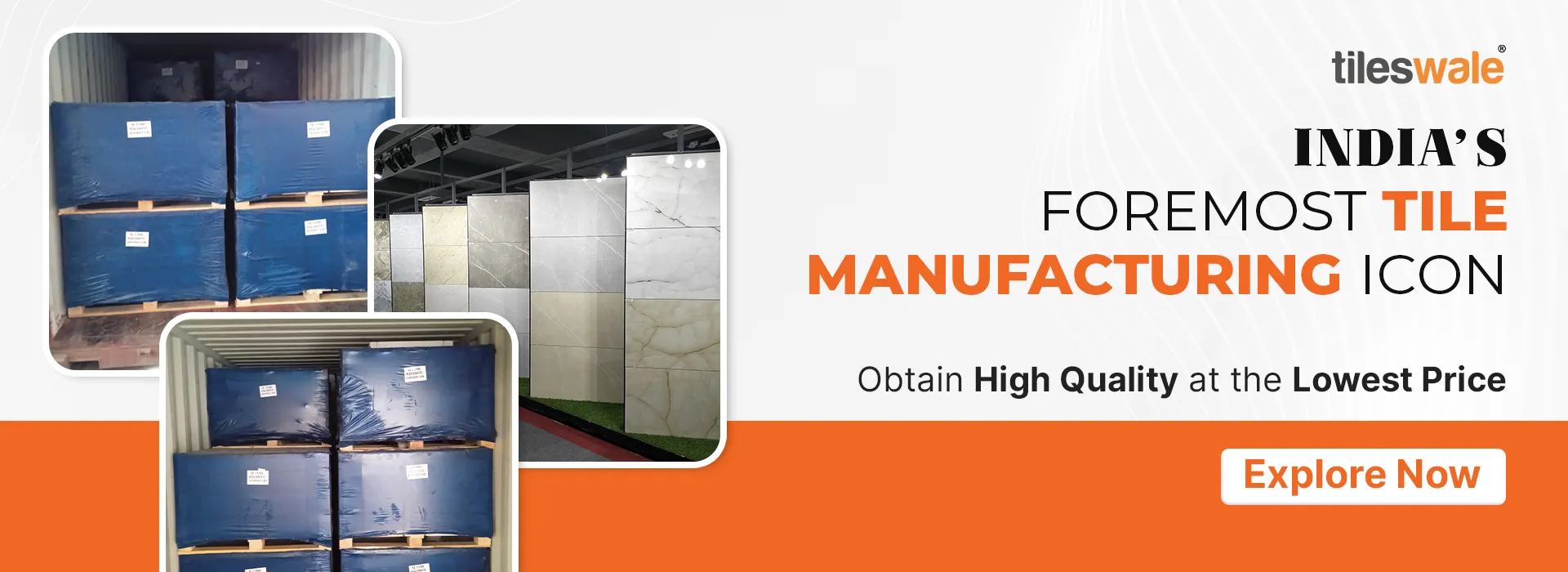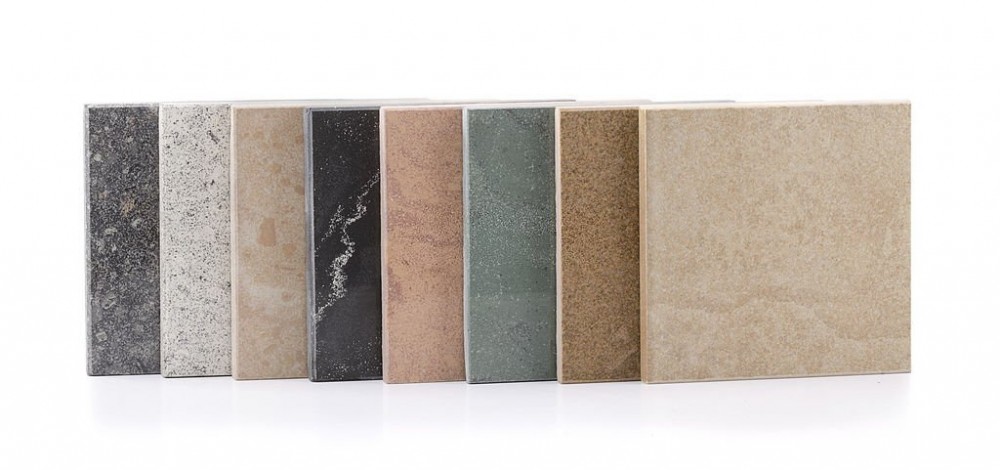
World's First Ceramic-Tile & Sanitaryware Live Marketplace. Get it on Google Play
Get it on App Store
World's First Ceramic-Tile & Sanitaryware Live Marketplace. Get it on Google Play
Get it on App Store
By Tileswale
A wide variety of natural stones are available in the market. Each stone has its characteristics. Thus, researching sustainable natural stones is imperative when you want to use natural stones in your home. It is an investment for a lifetime and not for a limited period.
Natural stones are the products of the earth that result from mineral composition and geological changes that have been occurring for several years. These stones are excavated from the surface of the earth & used for a wide variety of projects like flooring, fireplace, countertops, and sculptures. As already mentioned Natural Stone Variety exist and each has a different property that sets them apart and is unique.
There are several advantages of using natural stones at home. These natural stones are not only beautiful and unique for their properties but maintenance is super easy, durable, environment friendly, and adds value to a property.
For Explore More Details About Natural Stone Check Out This Article.
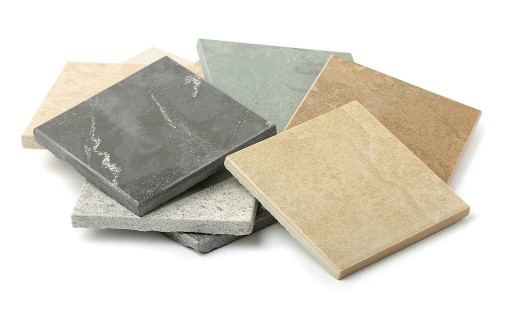
Here are the different kinds of stone that exist on the face of the earth namely marble, granite, limestone, sandstone, slate stone, quartz stone, and travertine stone.
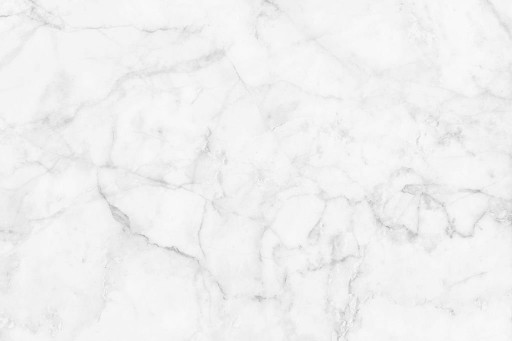
Marble is a rock made up of calcium carbonate that has been exposed to the natural recrystallization process. It is created by transforming other stones through intense pressure and high temperature. Due to this process, new mineral textures, as well as structures, gives rise to a hefty number of various types of marble. It is a natural stone that is susceptible to scratching and staining. The classy appearance of the marble has made it the most sought-after among homeowners. It is a classic natural stone that has been the go-to material for several years for architectural projects.
There are several advantages of using marble stone. Let’s take a look at the advantages of marble stone:
It is elegant and stylish and renders a royal look when used properly.
Among the Different Types Of Natural Stone Tiles available in the market, marble is considered to be the most affordable and is abundantly available in the market.
This particular natural stone has an acceptable compressive strength and the quality is exceptional.
Marble cutting is easy and the cleaning is also easier as the surface of the marble is polished and smooth.
Though marble is the most sought-after natural stone it has its drawbacks also which are as follows:
Never use acid for cleaning marble flooring or slab as it loses its shine and lustre. Thus, marble requires extra maintenance and care. It is a calcareous stone that is prone to acid etching.
Marble has a heavyweight & it requires many people for lifting it.
Marble turns extremely cold during the winter months.
Among various types of natural stone, marble is the most widely used natural stone. The chief use of marble is found in the construction industry and for sculpture. Besides, it is used in various industries for its properties. Let’s have a look:
Crushed marble is used as a construction aggregate.
Some marbles are exceptionally white and these are used for manufacturing white powder known as whiting.
Marble using heat process forms calcium oxide known as lime which is used in agriculture for soil treatment and for reducing soil acidity.
Powder marble is used for producing animal supplements.
White marble: It offers a clean & natural-looking finish to any application. It is elegant and strong.
Black marble: It is simple and elegant like white marble but gives a modern look and is aesthetically appealing.
Brown marble: This stone matches the natural earth tones and works well for flooring and countertops.
Beige marble: This particular marble stone displays a colour that ranges from light beige to dark brown and is widely used for countertops, flooring & other architectural purposes.
Cream marble: It is one of the best options for tile flooring. This particular colour of the marble blends flawlessly with any type of interior design.
Grey marble: It draws attention easily because of its classy appearance. It will render a completely exclusive look to a house when used.
Green marble: It is a serpentine stone because of its durability and strength. These marbles are considered to be the finest option for flooring, decoration, countertops, bathroom, vanity, and fireplace.
Ivory marble: This marble is best for use in the high traffic area of the home like the kitchen, and bathroom. It is available in white and beige colour.
Onyx marble: It is the finest quality marble that is used for both interior and exterior applications and is available in different attractive colours & designs.
Pink marble: It is a delicate and pure stone. When used in the residential property for countertops or walls and flooring purposes, renders a tranquil look.
Red Marble: It is a bold colour marble that makes your home stand out from the rest when used appropriately. It makes a room appear alive.
Silver marble: It is a simply gorgeous-looking marble suitable for both interior & exterior use and can be used in both residential and commercial spaces. It shines when illuminated with natural and artificial lights.
Yellow marble: a spectacular visual effect is what you will get with the use of yellow marble and it is unique in the truest sense.
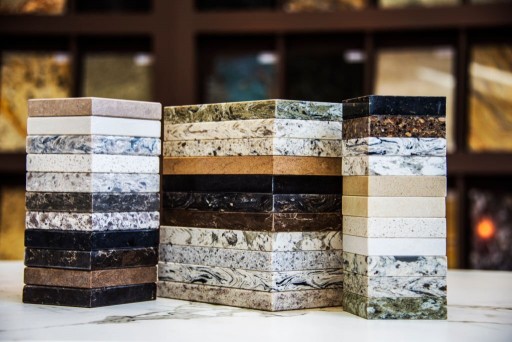
Granite is a coarse-grained and hard igneous rock that comprises orthoclase and quartz. Granite is another popular Natural Stone Type on the market. It is the hardest and most durable and needs low maintenance. Granite natural stone is considered an ideal option for various projects that include fireplaces, countertops, floors, outdoor projects & more. It comes in a wide variety of textures, colours, and finishes.
Granite is a versatile natural stone and is widely used among homeowners. It has several advantages why homeowners across the globe embrace granite. Let’s take a look at the advantages:
Granite tiles are flexible and can be used in several ways.
It is one of the cheapest options for use across the home.
It is extremely durable and strong.
Cleaning granite is super easy and can be cleaned using a regular cleaning agent.
It is non-porous
Granite is an extremely heavy natural stone and one must be careful enough when using it for a kitchen countertop.
It is not available in a variety of colours & patterns.
They are easy to crack and very cold to lean on during the winter months.
Long-lasting structures like monuments and temples are constructed using granite as it is strong and durable.
There are only a few granites that are amazingly beautiful and rare. Thus, these are used for the gemstone.
It can be used for flooring and on the fireplace mantle
It is also used in making basins, tabletops, shelves, and in the bathroom as well.
Black granite: It is a popular granite colour, versatile, and has huge applications as kitchen countertops, window frames, door frames, flooring, bathroom tiles, etc.
Blue granite: It is a grey colour granite stone with crystalline blue colour mineral in it. The interior of the house looks at its best when this granite is used.
Brown granite: This granite is available in a wide variety of colours and is the most common granite surface. You can install this particular granite stone in any part of your home.
Beige granite: This granite has a low absorption capacity that makes it ideal for application in the bathroom and the kitchen. It has long-lasting natural colour and shine.
Green granite: When a granite rock consists of Amazonite, a green variety feldspar then it becomes green granite. Huge variations in grains, veins, background, shades, and patterns can be found in green granite. Give a serene touch to your living space with the use of green granite.
Pink granite: It is immensely popular among architects and designers in the construction industry. This granite is highly sought-after and much appreciated because of its smoothness and rosy pink colour.
Red granite: It is another common granite colour and is predominantly used for making countertops and for flooring purposes.
White granite: This granite type is very popular because of its classic appearance and low cost when compared with other granite types. It is mostly used for making countertops.
Yellow granite: It has a beautiful shiny yellow surface with black dots and is aesthetically appealing. The attractive colour of the granite and appealing patterns and textures has made it quite popular.

It is a sedimentary rock that is composed of calcium carbonate. The limestone is commonly composed of shell fragments, tiny fossils, and other fossilized debris. It is one of the most diverse stones and has a wide variety of applications. It is used in building projects and constructing roads.
There are several advantages of using limestone. Here are the three advantages of using limestone:
It is exceptionally durable and resistant to weather.
Limestone is a versatile natural stone and is off-white mostly.
If an individual wants to keep his or her home cool, then there is no other best option than using limestone. It is an excellent heat conductor and keeps the interior of the building much cooler.
Landscape destruction and destruction of wildlife habitat within the landscape
Regular blasting indeed produces excessive dust and noise.
Dust, as well as severe pollution due to blasting, can lead to an increased number of respiratory cases.
Increase in traffic.
Limestone is used widely for architectural purposes like walls, veneer, and decorative trim. It has less frequent application in sculptural materials due to its softness and porosity. Though, it is a common base material & might be found in both veneer and structural applications.
Bituminous limestone: It is a limestone that is dense and dark and contains adequate organic matter that emits a foul odour when vigorously rubbed or freshly broken.
Carboniferous: It is a very hard limestone and is used as a road stone.
Coquina: It is a sedimentary rock formed by subsequent mineral cementation or organic particles on the floor of the ocean
Crystalline Limestone: It is formed of plentiful calcite crystals because of diagenesis.
Dolomitic Limestone: It is made up of calcium and magnesium carbonate. It is tough, strong, and available abundantly.
Fossiliferous Limestone: It is a sedimentary rock that can be formed in two ways: by building up hard parts of marine organisms or by chemical precipitation from water.
Lithographic Limestone: It is a very smooth and dense form of limestone.
Oolitic Limestone: This limestone is comprised of calcium carbonate oolites, tiny grains composed of concentric layers.
Tufa: It is another form of limestone which forms near lakes and hot springs where the water contains a high level of calcium carbonate concentration.
Rag-stone: it is a grey, hardy, and sandy limestone which forms a necessary component of Hythe formation of the cretaceous period.
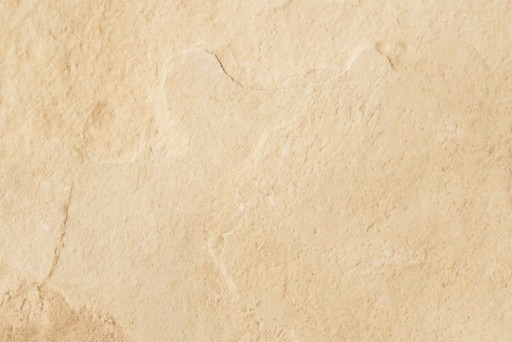
It is a sedimentary rock composed of sand-size silicate grains. It is common and can be found globally. This stone is formed with the deposit of minerals like quartz in the river, lakes, and ocean floor over centuries.
The sandstone is completely formed by the nature, it is unique. The pattern, hues, and colours of the sandstone are different and unique.
Sandstone is durable and if proper care and maintenance are done, it can last for a decade.
The natural beauty of the sandstone has made it exceptional.
It is environment-friendly.
Sandstone absorbs water
It is a soft rock compared to other rocks and gets scratches and dents with time.
Sandstone becomes slippery when wet.
Only a few colour options of sandstone are available.
With the use of sandstone, excellent kitchen countertops can be made. It can be used on bathroom walls, fireplaces, furniture units, balconies, etc. it can be also used outdoor in the garden and backyard making it look welcoming. It is an exceptional material for pavers & flower pots.
Grey Sandstone: It is a very hard sandstone due to quartz grains cemented together with calcite and silica. It is a hard-wearing sandstone that shares solid modern bluestone feels & looks incredible when placed around a pool.
Crystallized Sandstone: This particular sandstone is sugary and white, brittle, and very hard.
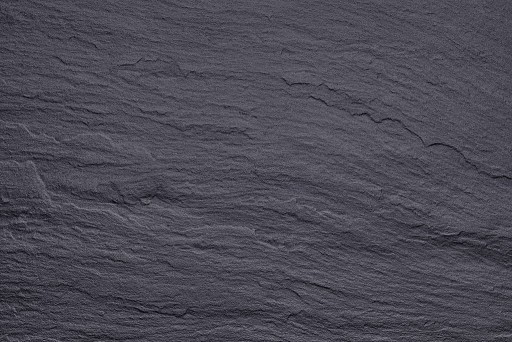
It is a fine grain metamorphic rock that splits or cleaves into thin slabs. This stone has great durability and tensile strength. Some rocks that occur in thin beds are called slate and can be used for roofing and various other purposes.
It is fire-resistant.
It is capable of withstanding higher temperatures than any metal.
It can endure severe temperature changes.
It is a perfect choice for roofing and floors.
It is costly and its high cost is because of the installation and materials.
Slate is a very heavy material.
It is brittle and the surface is rough which makes it painful to walk barefoot.
It is considered the finest grained metamorphic rock and is widely used worldwide as a construction material. It is primarily used on roofs and floors, is resistant to fire, and is an excellent insulator.
Grey Slate Stone: It is a dense quartzite slate, extremely hard, and suitable for outdoor use.
Purple Slate Stone: It is exclusive and suitable for outdoor use also.
Black Slate Stone: Easy to install and offers super performance. It can be used for roofing, flooring, paving, and cladding the wall.
Blue Slate Stone: It is appropriate for garden borders, mulch, and decorative rockeries and can be used on the pathways as well.
Green Slate Stone: impervious to water and capable of withstanding varying climatic conditions & retain the original looks for years.
Heather Slate Stone: It is a calibrated slate that varies from light to dark grey with purple hues and undertones.
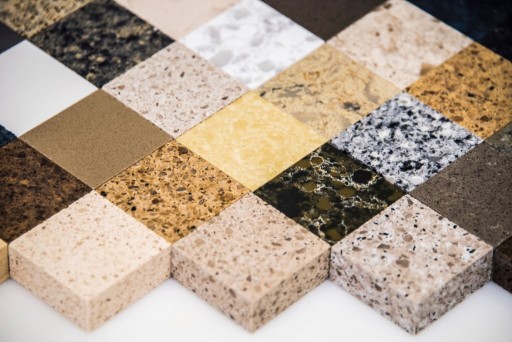
It is the second most abundant mineral after feldspar in the earth’s crust. A wide variety of Types of Stone Slabs are available and quartz is one such making use of which you can construct a kitchen countertop.
Quartz is non-porous
It requires less maintenance.
It is highly durable, once invested in quartz countertop, it will last for a lifetime.
It is elegant and can change the look of a kitchen.
Quartz gets easily damaged from heat.
It is an expensive material
Sink options are very limited
As quartz is abundantly available, it has several uses other than only used for making kitchen countertops. It is used for making jewellery. Quartz is also used for making glass, clocks, and watches. It is widely used in the metal casting industry.
Amethyst: It is a violet variety of quartz & known as an all-purpose stone, a protective stone that helps in alleviating stress.
Blue quartz: It alleviates fear & increases creativity & expression.
Dumortierite quartz: It is the rare and unusual blue variety of quartz gemstones.
Citrine: It is impeccable in curing various ailments of liver, heart, thyroid, sleep disorder, etc. It detoxifies the body & improves digestion
Milky quartz: It is also known as snow quartz and is associated with tranquillity and innocence.
Rose quartz: This is known for promoting a feeling of self-love and is used for balancing emotional health.
Smoky quartz: It is known for improving the overall well-being of an individual
Prasiolite: It has the powerful curative property for healing the physical ailment.
Rock crystal: It is the most valued quartz for its clarity and lack of flaws.
Chalcedony: It is a cryptocrystalline form of silica that contains fine intergrowths of moganite & quartz.
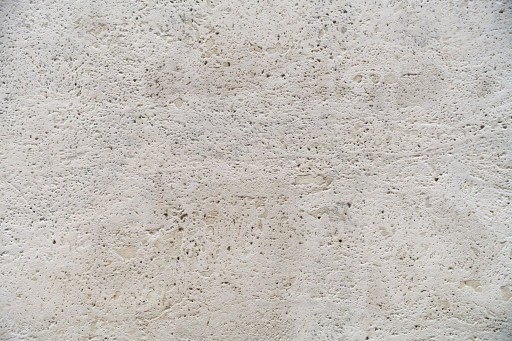
It is a natural stone that is widely used for paving garden paths and patios. It is also known as travertine marble and travertine limestone. It is durable and care and maintenance are easy. Travertine is not appropriate for all surfaces.
Travertine stones require simple maintenance and care.
It does not require any special products for cleaning
The colour of the stone lasts for a lifetime
The stone is resistant to heat and fire.
It is extremely porous and has a lot of holes.
It is susceptible to etching and staining
It contains calcium carbonate and reacts with acidic foods.
It is the most used stone in modern architecture and is commonly used for residential and business flooring. It is used for outdoor patio flooring, ceiling, spa walls, wall cladding, and facades.
Ivory Travertine: It is an elegant stone that works beautifully with most hardscape designs whether contemporary or classic. It comes in several sizes and is sold by the square foot.
Beige Travertine: It is another significant travertine stone and can be used for flooring. The colour adds a royal touch to a property.
Walnut Travertine: It is a Tuscan material and is the most sought-after because of the colour and the compact structure.
Blue Travertine: It is the ultimate choice for floors, walls, and bathrooms. It offers harmony and softness to the interiors.
Brown Travertine: it is a unique natural stone and is suitable for upmarket floors, walls, tiles, and bathrooms. It is a premium choice for modern living.
Gray Travertine: It is a beautiful blend of grey, white, and silver.
Yellow Travertine: it is a natural golden stone with sporadic speckles throughout. It is suitable for bathrooms, showers, wash stations, and flooring.
Silver Travertine: It is a stylish colour from the travertine family & is made of limestone deposited due to mineral springs.
Silyon Travertine: it is a variable beige and brown travertine with beautiful textures and white veining.
Crema Travertine: It looks good both indoor and outdoor and is a timeless classic.
Golden Travertine: An exclusive material for the construction sector. It has a distinctive look and structure.
Pink Travertine: It is characterized by a compact and uniform background of pink colour.
White Travertine: It is an exceptional and classy stone from Italy and can be produced in various kinds of finishes & holes fillings.
Red Travertine: It is a rare variety of travertine stones.
Vesta Travertine: It is used in constructing monuments.
Titanium Travertine: It is just appropriate for residential use.
Classic Travertine: It has a sleek and contemporary finish and has a straight edge
Scabas Travertine: It is an organic and beautiful grey and beige stone available in tiles and mosaic.
This article transports a clear idea about the types of natural stones and how it is useful for humankind. When it comes to buying natural stones for a particular purpose, you will certainly not have any issues as read through the article thoroughly that offers a deep insight about the natural stones. Make sure that you choose the natural stone that serves your purpose and remembers to buy from a reputed supplier.
Article Updated - June 23, 2022
Submit your inquiries, we will see the rest
size:
Quantity:

+ Requirements

We have received your Inquiry. We will soon connect you with relevent Sellers via tileswale App. download now!!

